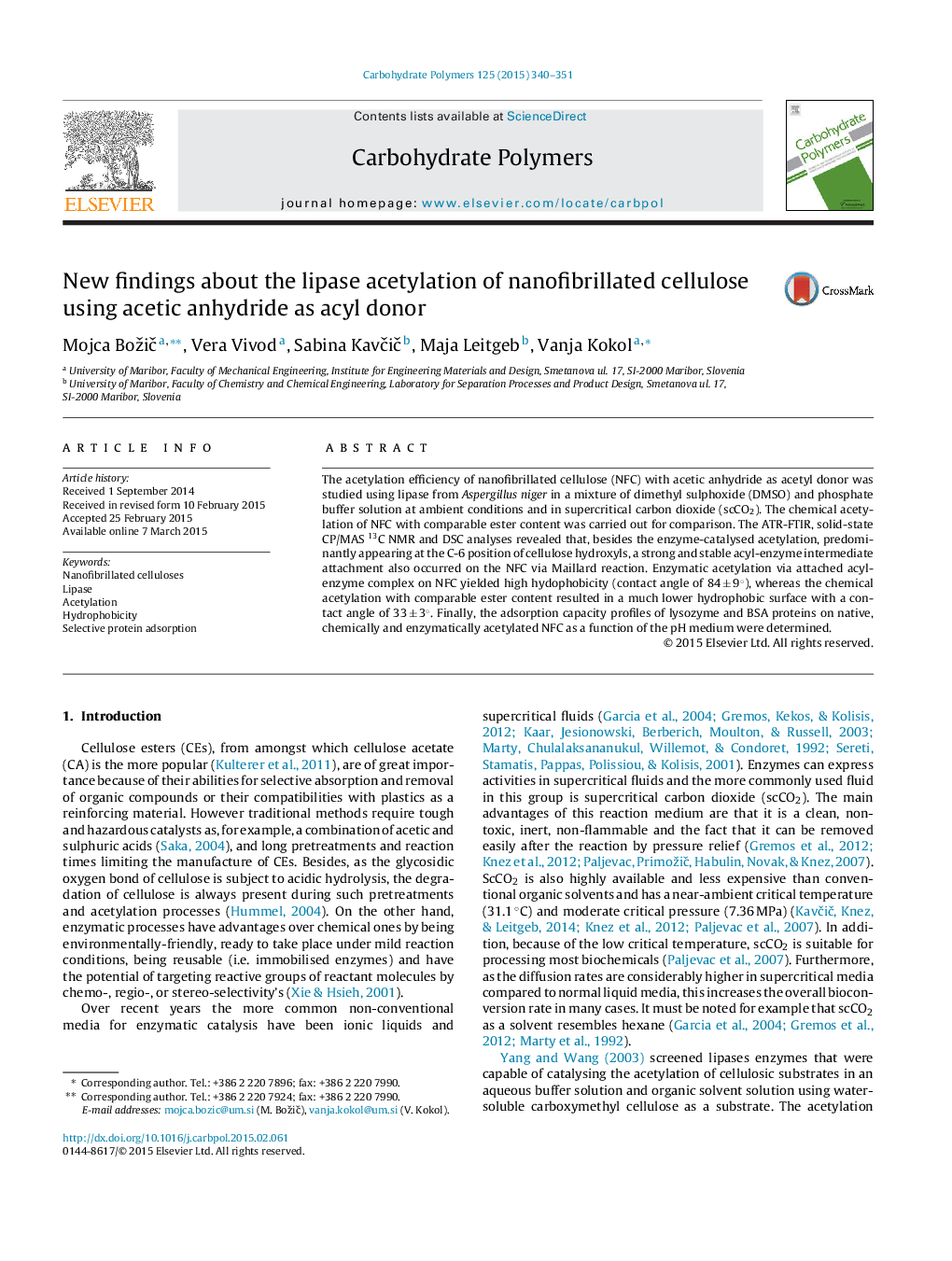| Article ID | Journal | Published Year | Pages | File Type |
|---|---|---|---|---|
| 7788757 | Carbohydrate Polymers | 2015 | 12 Pages |
Abstract
The acetylation efficiency of nanofibrillated cellulose (NFC) with acetic anhydride as acetyl donor was studied using lipase from Aspergillus niger in a mixture of dimethyl sulphoxide (DMSO) and phosphate buffer solution at ambient conditions and in supercritical carbon dioxide (scCO2). The chemical acetylation of NFC with comparable ester content was carried out for comparison. The ATR-FTIR, solid-state CP/MAS 13C NMR and DSC analyses revealed that, besides the enzyme-catalysed acetylation, predominantly appearing at the C-6 position of cellulose hydroxyls, a strong and stable acyl-enzyme intermediate attachment also occurred on the NFC via Maillard reaction. Enzymatic acetylation via attached acyl-enzyme complex on NFC yielded high hydophobicity (contact angle of 84 ± 9°), whereas the chemical acetylation with comparable ester content resulted in a much lower hydrophobic surface with a contact angle of 33 ± 3°. Finally, the adsorption capacity profiles of lysozyme and BSA proteins on native, chemically and enzymatically acetylated NFC as a function of the pH medium were determined.
Related Topics
Physical Sciences and Engineering
Chemistry
Organic Chemistry
Authors
Mojca BožiÄ, Vera Vivod, Sabina KavÄiÄ, Maja Leitgeb, Vanja Kokol,
